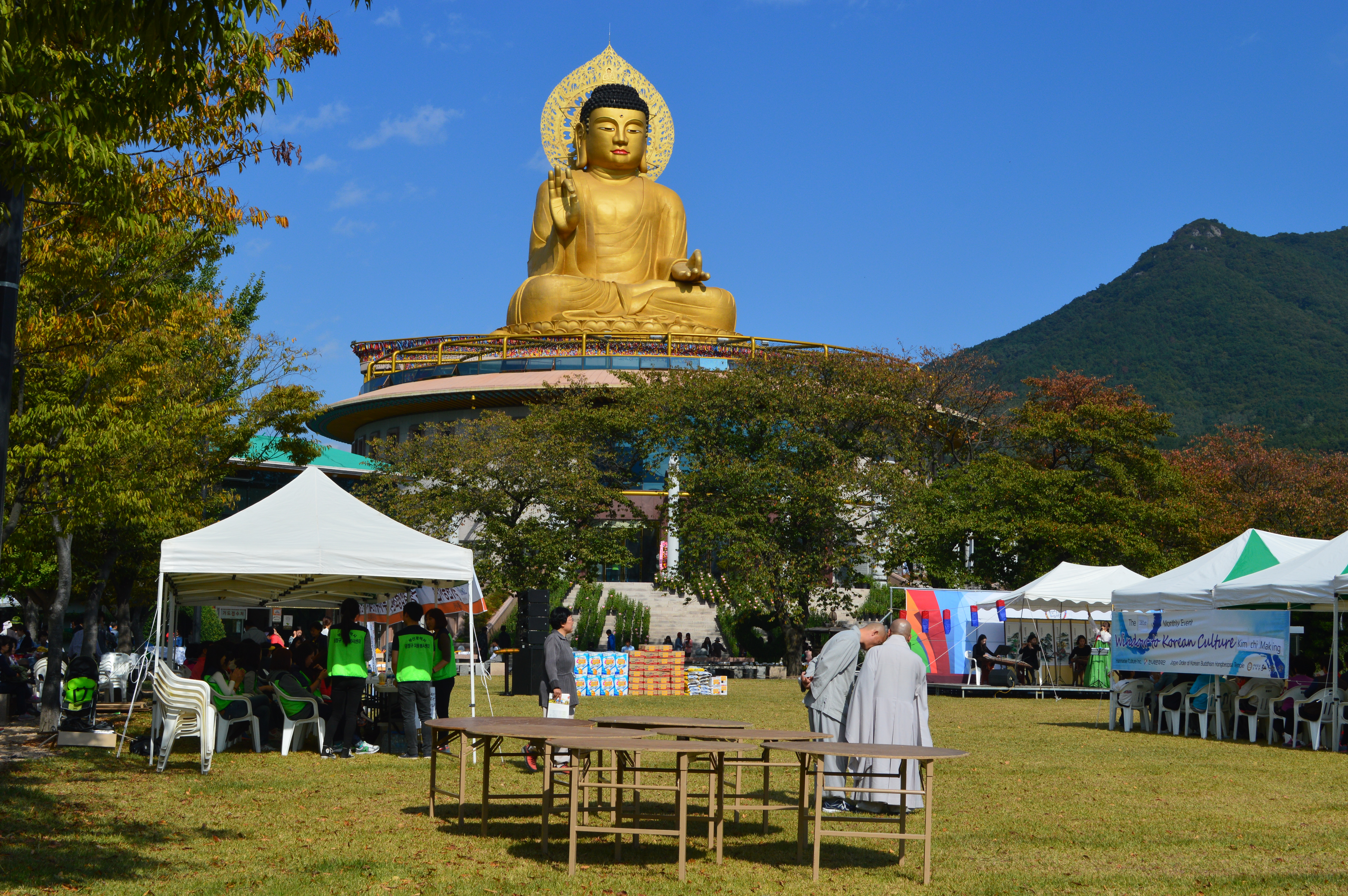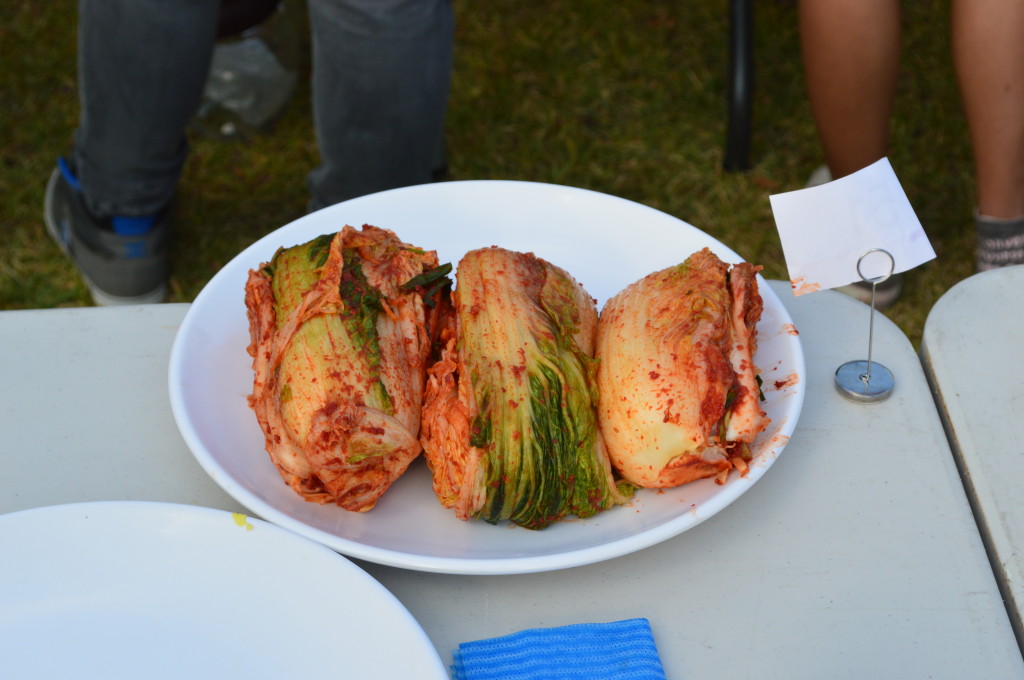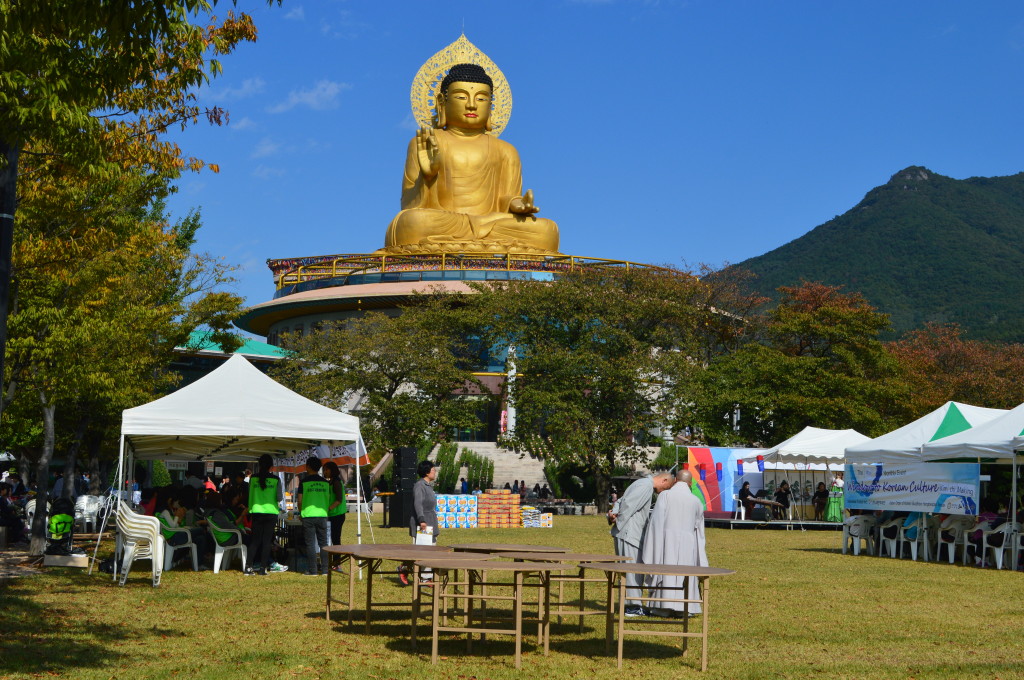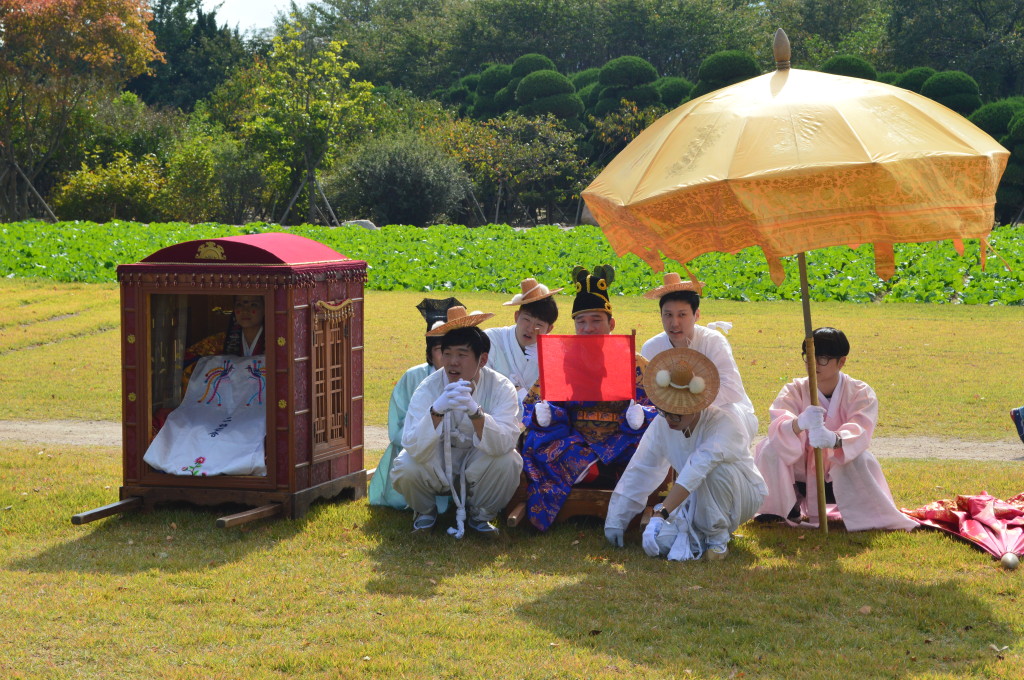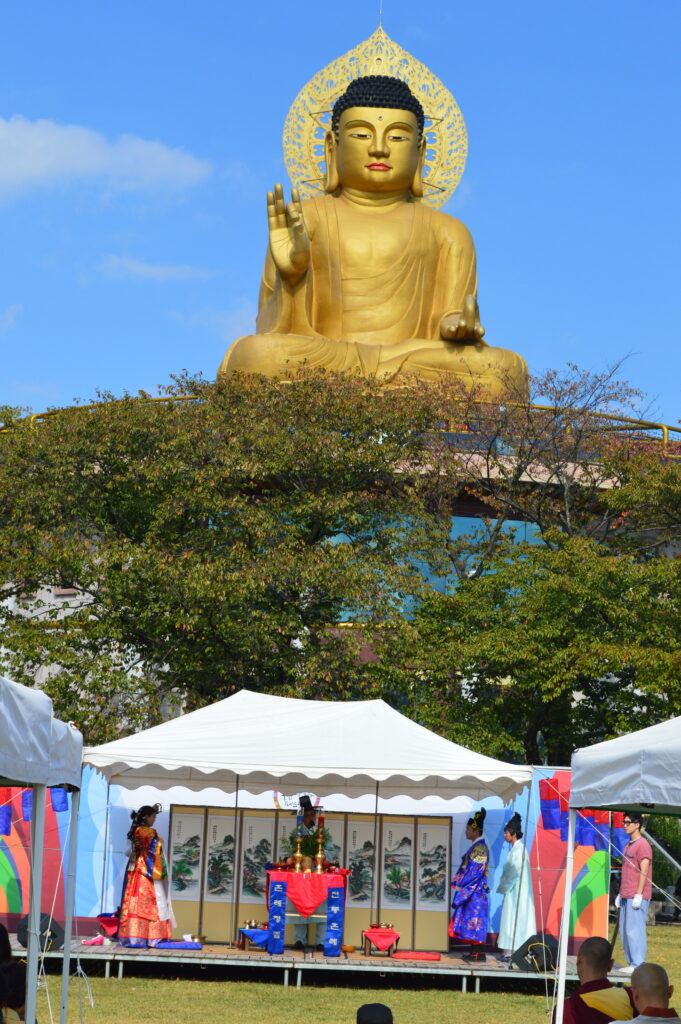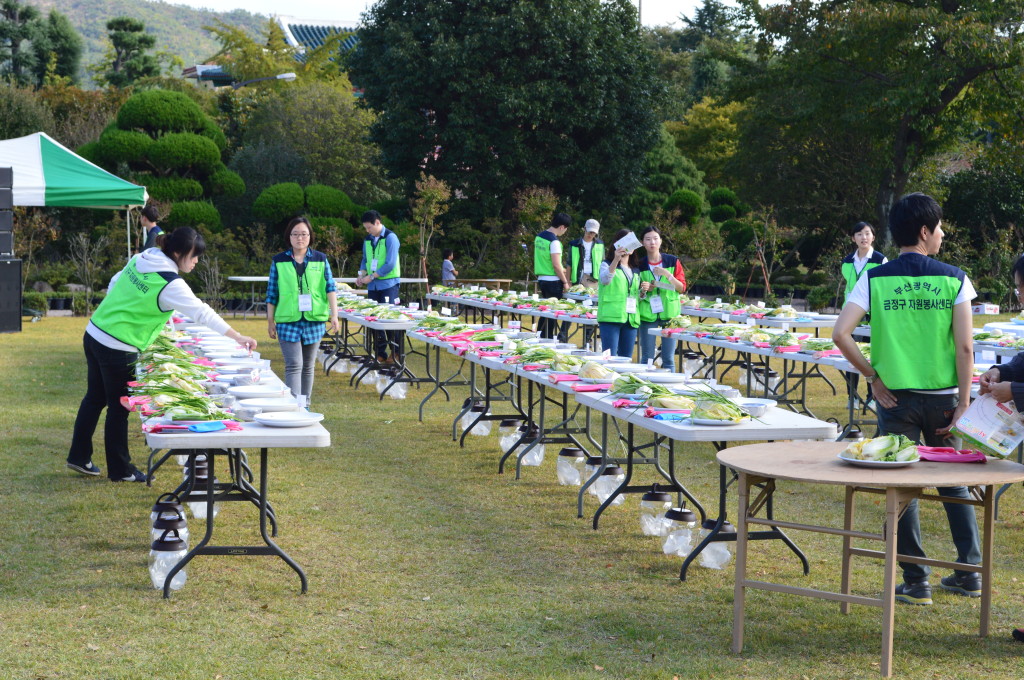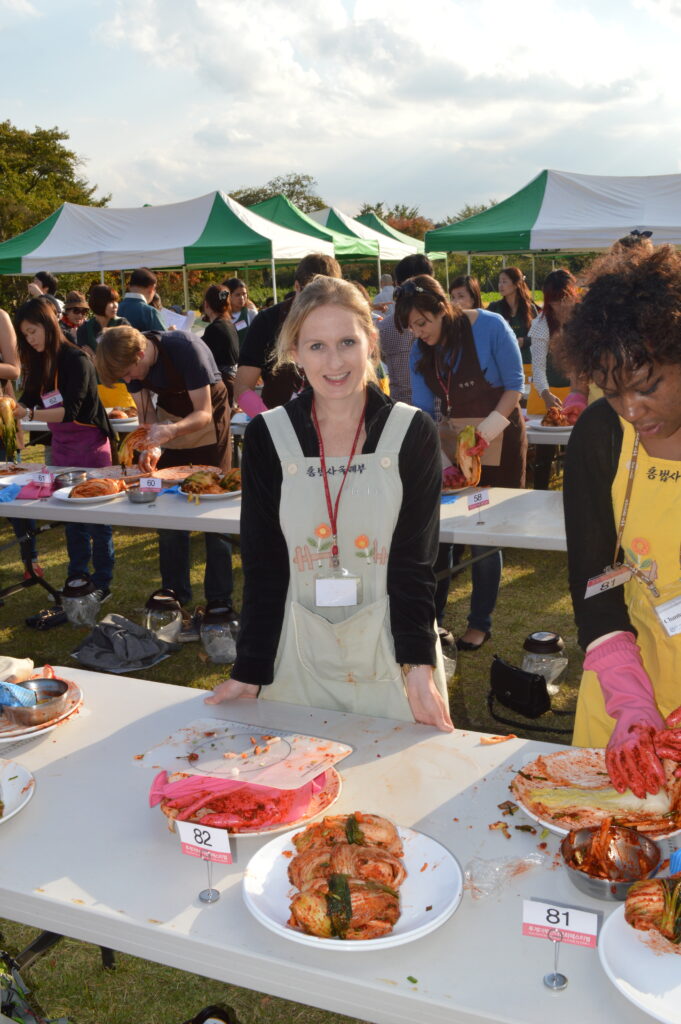I’ve been flagged. I’ve covered about 8 months of my time in Korea, and I still haven’t done the requisite kimchi page. Very commonly, kimchi is the first thing foreigners think of when someone mentions Korea. Kimchi is fermented cabbage mixed with spices and is ubiquitous in Korean cuisine. Don’t get me wrong – there is a lot of delicious Korean food that doesn’t involve kimchi, but usually kimchi will at least be served on the side with these dishes (Koreans consume 55 lbs or 25 kg of Kimchi per person per year).
This isn’t the best looking kimchi you’ll see because we made it. Hongbeopsa 홍법사 Temple holds events once a month for foreigners who want to learn more about Korean culture. October’s event was Kimchi making or Kimjang 김장. Kimjang was listed as a Unesco Intangible Cultural Heritage in December 2013. In October, the markets in Korea overflow with the ingredients to make kimchi (cabbage, onions, garlic, ginger, red chili) and traditionally, families gathered to share in the process of stockpiling kimchi for the winter.
It was a perfect autumn day at the temple.
There was a traditional marriage ceremony
After the wedding ceremony, the kimchi making area was set up. We didn’t know it at the time, but this was a competition complete with prizes.
Here’s Shannon with her completed kimchi
They provide you with a container to pack it up and bring it home too! Traditionally, kimchi was put in earthen pots in the ground and allowed to ferment. The temperature is important, so nowadays many Koreans have a dedicated kimchi fridge for this.
